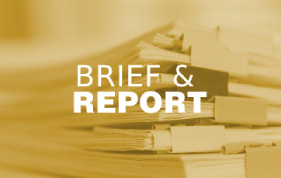During the month of May, HMA is featuring thought leadership and insights around Behavioral Health (BH) and changes within the BH delivery system in the U.S. Along with several presentations happening at NatCon25 in Philadelphia, May 5-7, we want to highlight some of the work done by HMA experts. Starting us off, Josh Rubin, HMA Vice President, Client Solutions, has spent his career working with BH, intellectual and developmental disabilities, and child welfare service providers. In this post, he discusses the changing BH delivery system, and the issues surrounding the treatment of co-occurring mental health conditions.
Ever since the 19th century when Dorothea Dix crusaded up and down the east coast encouraging state legislatures to fund state psychiatric hospitals, we have had separate systems for medical and mental health care. I mean Ms. Dix no disrespect, far from it; before her work we simply had no system of care for people with mental illnesses. Her contribution was immeasurable. But in 1963 when President Kennedy signed the Community Mental Health Act, it was an acknowledgement that the “out of sight, out of mind” warehousing of people with mental illnesses in large state psychiatric hospitals was inappropriate and had to end.
Those of us who remember the heady days of the 1960s rightly celebrate the advance this represented in acknowledging the rights of people with mental illness to live in the community, and the opportunity it created for people with behavioral health conditions to build lives of dignity, productivity, and inclusion. And while we ought to celebrate that important advancement, we must nonetheless acknowledge that it maintained a separation between the underfunded mental health system, and a significantly better funded medical system. And thus, the community mental health system in America was built. It was designed to provide mental health care to the roughly 5% of the population that has a serious mental illness (SMI). In the nearly 60 years since, much has been done of which community mental health providers should be proud. We have transformed countless millions of people’s lives (and those of their families), built new program models, identified and implemented new practices, and built a service delivery system that offers a comprehensive continuum of care for people with SMI.
Unfortunately, that system was not built to address the needs of people with co-occurring mental health and substance use disorders (SUD), which is problematic because nearly half of people with a substance use disorder have a mental illness and nearly half of people with a serious mental illness have a substance use disorder. This is no surprise; the conditions are related. Some people with mental illnesses use drugs to manage their symptoms. Sometimes drug use can cause or exacerbate mental illnesses. In most cases, it is impossible to figure out where a mental illness ends, and a substance use disorder begins, or vice versa.
Yet in the U.S. we have always had separate service systems for these two conditions. Our systems grew up this way because although the stigma of mental illness is bad, the stigma of substance use is worse. While we have frequently been willing to address mental illnesses as health problems, we have long treated substance use disorders as criminal justice problems. We created community mental health centers. We launched a war on drugs.
The federal government provides two separate funding streams for states, one for mental health, the other for substance use disorder services. In many states there are separate agencies overseeing the two conditions, separate funding streams, and separate regulatory structures. Many providers respond to the funding and offer separate programs for one condition or the other.
This systemic failure leads every day to the death of Americans who have co-occurring mental health and substance use disorders but cannot access treatment for the two conditions together. Treatment works, and recovery is possible, but treatment works best when you are able to get treatment for your entire problem.
And just as the mental health and SUD systems were separated, they were both also segregated from the general healthcare delivery system. The stigma of our clients’ illnesses attached to us and our service system, so we were largely ignored by the healthcare delivery system and the people who funded and oversaw it.
While we have, as I said, much to be proud of, we cannot ignore the impact of our segregation. Our clients continue to die much younger than their peers. BH-related hospitalizations continue to increase. Overdose deaths and completed suicides, the worst possible outcomes, keep climbing, leaving incalculable suffering in their wake. And the financial costs of BH conditions continue to escalate, falling hardest on the historically underserved and marginalized communities that can least afford them. When America establishes a separate system, it isn’t equal; being ignored has consequences.
The good news? BH is not being ignored any longer. The bad news? BH is not being ignored any longer.
Healthcare policymakers have finally awakened to the reality that they will not be able to achieve their goals of better outcomes, lower costs, and improved customer service unless they address the BH needs of their populations. They are figuring out that everyone needs behavioral healthcare, and that a dichotomy that focuses BH care only on those with the most significant BH issues is ill serving. They are coming to understand that the skills, capabilities, and expertise of community BH providers have extraordinary value. It’s nice to be acknowledged and invited to help.
But it’s not all good news, because while being ignored left us underfunded and disrespected, it also protected us. Now that hospitals (which have been buying up outpatient practices at a remarkable pace) have started opening up BH services, we must compete with their deep pockets. And private equity (with even deeper pockets) has increased the pace at which they are acquiring BH providers, forcing additional competition on us. We are not even safe from our own phones. 10,000 mental health apps in the app store offer our clients a totally different paradigm for care, much of it lacking any evidence-based foundation. This makes it more dangerous for our clients, not less competitive for BH providers.
This environment requires fundamental changes in the way BH providers operate. We need new models of care that better meet the needs of the people we serve. Certified Community Behavioral Health Clinics (CCBHCs) are a step in the right direction, but they’re not a significant change in the service delivery model. If you look at the history of the BH system in America, from Dorothea Dix through today, you will see that the movement has been consistently in the same direction – inward. We have moved out of the hospitals in the countryside into clinics in the neighborhood. We have slowly chiseled away at the barriers dividing mental health from substance use disorder services. We have patiently worked to integrate with our health care colleagues. Now things are accelerating, and the pace of change is scary, but we should embrace the opportunity. We have a once in a lifetime chance to build something new, better, more effective.




